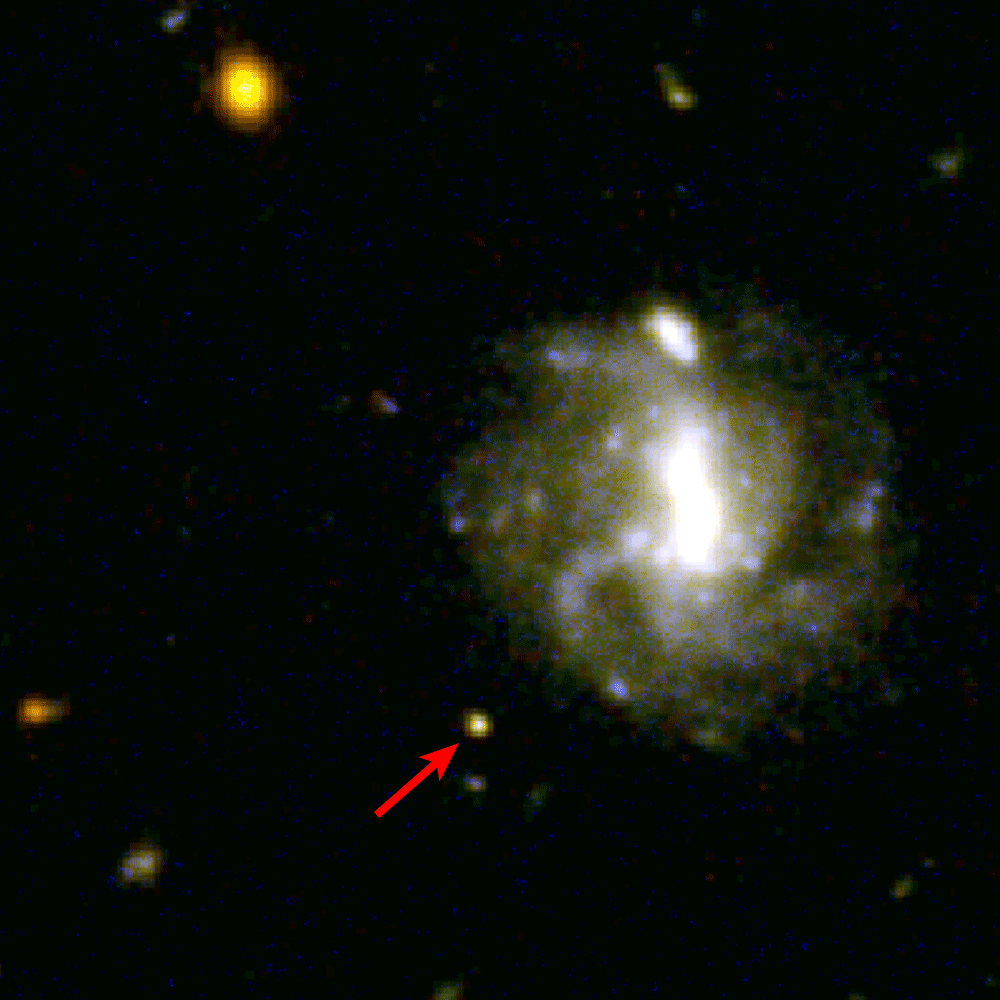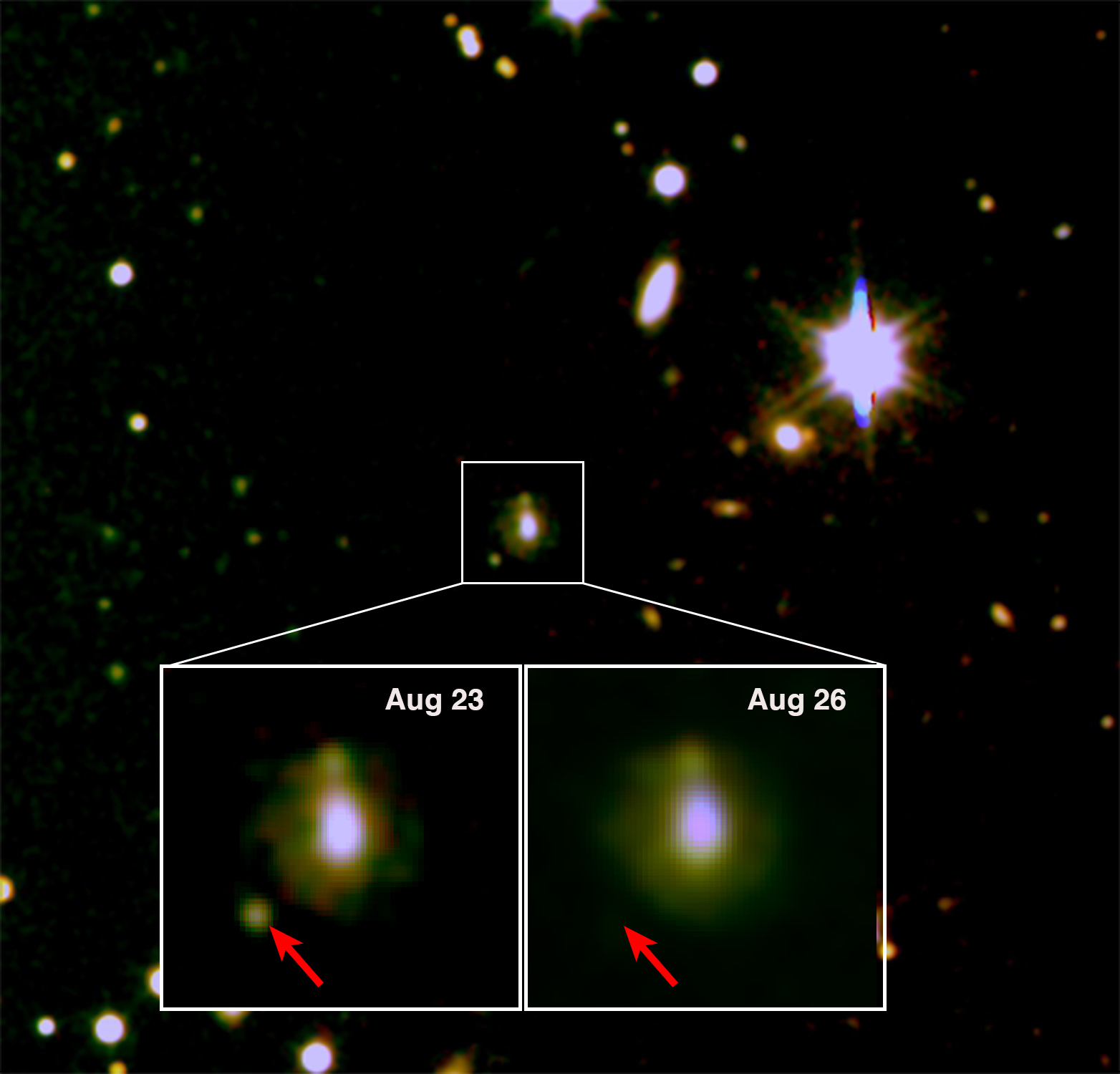A distant stellar collision with the shine of precious metals
A signature similar to the gold and platinum producing explosion observed in light and gravitational waves in 2017 is found in the data of a 2016 gamma ray explosion. This confirms that heavy elements are produced in kilonovas, bursts that result from the fusion of very compact objects, such as neutron stars or black holes
On August 17, 2017, the first observation of a cosmic event in light and gravitational waves was announced: the fusion of two neutron stars opened up a new era in the observation of the universe and also provided the first evidence that the heavy elements, such as gold, platinum or uranium, occur in these phenomena. Now, an international team of astronomers, with the participation of the Institute of Astrophysics of Andalusia (IAA-CSIC), publishes the discovery of a similar event in 2016 that had gone unnoticed.
Neutron stars are very compact and fast-rotating objects that arise when a very massive star ejects its envelope in a supernova explosion. The predictions indicated that a fusion of neutron stars would produce a short gamma rays burst (GRB), gravitational waves and a kilonova, a phenomenon similar to supernovae but whose energy comes in part from the decay of radioactive species and that produces large amounts of heavy elements - in fact, it is believed that most of the gold and platinum on Earth formed as a result of ancient kilonovas.
Based on data from the 2017 event, first spotted by LIGO instrument, astronomers began adjusting their assumptions of how a kilonova should appear to Earth-bound observers. A team led by Eleonora Troja, from the University of Maryland, reexamined data from a gamma-ray burst detected in August 2016 and found evidence of a kilonova that went unnoticed during the initial observations.

THE REDISCOVERED KILONOVA
However, the 2017 LIGO event data opened new perspectives. "We looked at our old data with new eyes and realized that we had captured a kilonova in 2016. It was an almost perfect combination: the infrared data for both events have similar luminosities and exactly the same time scale", concludes Troja (U. Maryland / NASA).
The similarities between the two events suggest that the 2016 kilonova also resulted from the merger of two neutron stars. Kilonovas may also be the result of the merger of a black hole and a neutron star, but it is unknown if such an event would produce a different signature on X-ray, infrared, radio and optical light observations.

“Although the information collected from the 2016 event does not contain as many details as that of the LIGO event, its early detection with the Gran Telescopio Canarias in the optical allowed us to observe it practically from the first minutes, which brought new ideas about the initial stages of a kilonova”, says Alberto J. Castro-Tirado, a researcher at the Institute of Astrophysics of Andalusia (IAA-CSIC) who participates in the discovery as the second author of the publication and who coordinated the observations of the event made over several weeks with the Gran Telescopio Canarias (GTC).
For example, the team observed for the first time the new object that remained after the collision, which was not detected in gravitational waves as the LIGO gravitational wave detector was not yet operational in 2016. The remains of this collision could be a highly magnetized hypermassive neutron star known as magnetar, which survived the collision and then collapsed into a black hole.
THE ORIGIN OF HEAVY ELEMENTS
Virtually all the chemical elements that we know have an astronomical origin, and they were produced well in stages very close to the Big Bang, in which hydrogen and helium were formed, or in the stars, both through the fusion of elements in the nucleus (which produce carbon, nitrogen or iron) as through explosive events (in which lead or copper are generated).
However, there were discrepancies about what is known as the r-process (or rapid process), which takes place in explosive stellar events and is responsible for the production of half of the heavier elements than iron, including uranium and gold. Although at first it was thought that supernovae were the source of these elements, recent studies favor mergers of neutron stars as the main producers of the heaviest elements.
This work opens the door to reassess past events, as well as to improve the focus of future observations. "The intense infrared signal of this event observed with the Hubble against the optical emission detected with the Gran Telescopio Canarias, makes it possibly the clearest kilonova we have observed in the distant universe, specifically in a spiral galaxy 2500 million light-years away. As we observe more events of this type we can study how the final remains or properties of the kilonova change depending on their progenitors, and learn that there are different types of kilonovas as is the case with the different types of supernovae”, concludes Castro-Tirado (IAA-CSIC).
SPANISH PARTICIPATION
Alberto J. Castro-Tirado, Y.-D. Hu, Isabel Márquez and Juan Carlos Tello, of the IAA-CSIC, and Josefa Becerra and José Acosta Pulido, of the Institute of Astrophysics of the Canary Islands, participate in the international team that produced this work.
E. Troja, A. J. Castro-Tirado et al. "The afterglow and kilonova of the short GRB 160821B ". Monthly Notices of the Royal Astronomical Society (August 2019).
Instituto de Astrofísica de Andalucía (IAA-CSIC)
Unidad de Divulgación y Comunicación
Silbia López de Lacalle - sll[arroba]iaa.es - 958230676
https://www.iaa.csic.es
https://divulgacion.iaa.csic.es

